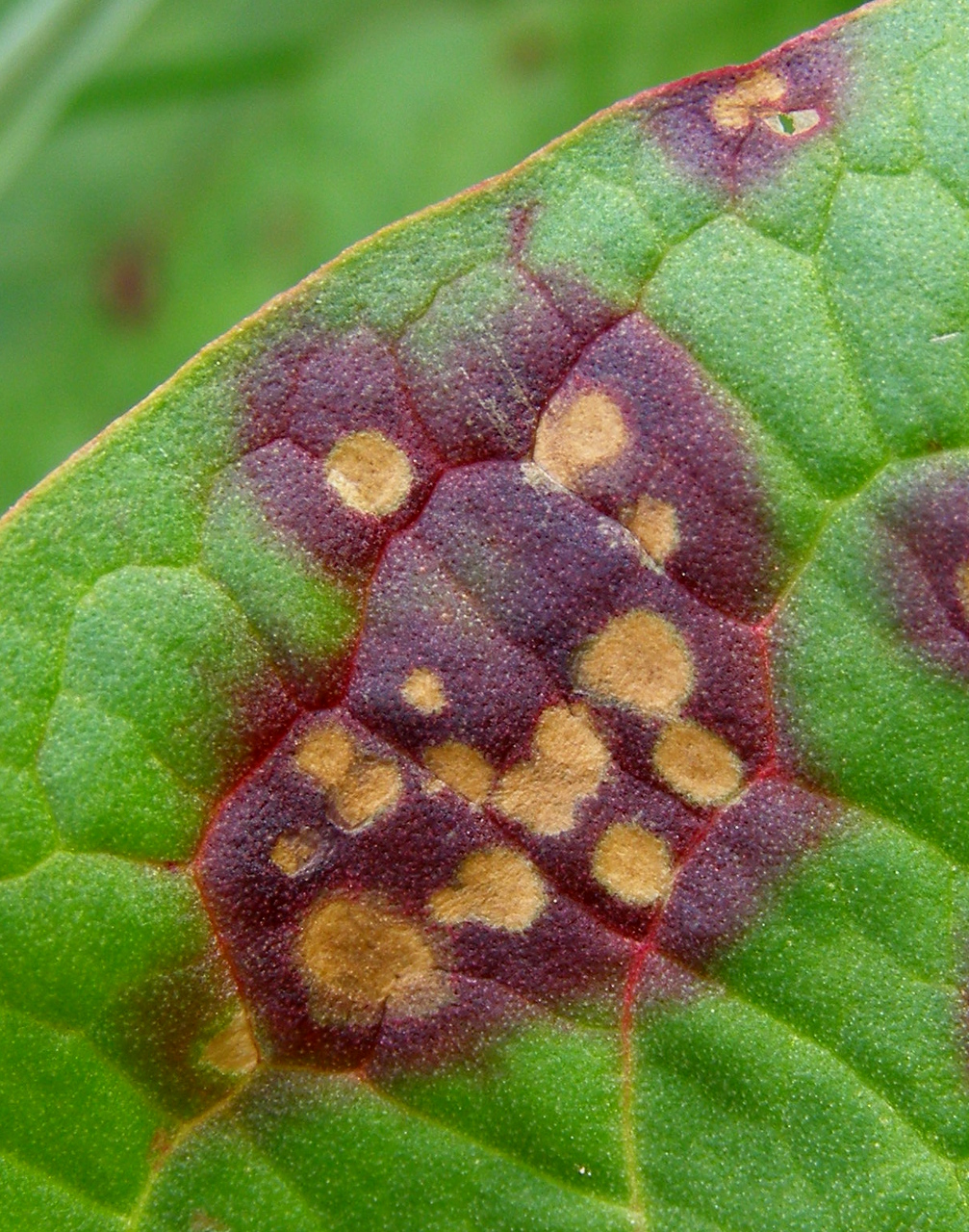
Leaf spot Ramularia
Ramularia deusta
Also Known As - Ramularia leaf spotWhat is Ramularia leaf spot (Ramularia spp.)?
Ramularia leaf spot, caused by various species of Ramularia spp. including Ascochyta rhei and Ramularia rhei Ramularia cynarae, which are fungal pathogens that commonly affect rhubarb plants. Symptoms include small yellow-green spots that merge to form a mosaic appearance with white centers falling out. Ramularia leaf spots begin as red dots and progress into whitish-tan circular areas with a purplish halo.
How does Ramularia leaf spot (Ramularia spp.) occur?
These fungi overwinter on old leaves and stalks, providing a source of infection for the following growing season. They can also spread through infected rootstock. The pathogens reproduce and spread through the production of spores, which are dispersed by wind and splashing water. The frequent rains in March and April, especially in regions west of the Cascade Range, create favorable conditions for the development and spread of Ramularia leaf spot on actively growing leaves and stalks.
Symptoms
1 - Impacts on Plants
• The effects of Ascochyta rhei and Ramularia rhei on plants include the development of leaf spots, defoliation, and reduced plant vigor. • These fungal pathogens can weaken the overall health and productivity of plants.
2 - Impact on Soil and the Environment
• The diseases may contribute to the buildup of pathogen populations if infected plant debris is not properly managed. • The spread of these pathogens through wind and water can impact the local ecosystem by potentially affecting nearby plants and crops.
Solutions
1 - Preventive Measures for Ramularia Leaf Spot
• Crop rotation and avoiding continuous planting in the same area. • Sanitation practices, such as removing and destroying infected plant debris. • Selecting disease-resistant varieties and consulting local experts for recommendations.
2 - Cultural and Management Practices
• Ensuring proper spacing to promote airflow and reduce leaf wetness. • Implementing appropriate irrigation methods to minimize leaf wetness. • Following good cultural practices, including proper fertilization, and pruning for overall plant health. • Monitoring plants regularly for early detection and taking immediate action upon symptom appearance.
3 - Application of Fungicides
• Use fungicides as recommended by local agricultural experts or extension services. • The fungicides commonly used for controlling include Inspire Super, Quadris Top, Luna Sensation, Trifloxystrobin, Quadris, and Rally 40WSP. • Apply fungicides according to label instructions and safety precautions.
